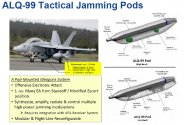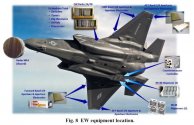They do show trends, however. Jamming antennas begin from certain sizes(to get to certain ranges and power levels), and show tendency to either grow, or pack more power in the previous size(GaN for example), or both.Upper range capabilities don't determine lower range floors.
Is it possible to pack weak jamming capability into comm-sized antenna?
I'd probably agree, why not. There are drone communications jammers this big.
Will it significantly affect contemporary radar? No (equations)
Does it make sense? No, point of having this system is nil, space, price and complexity is not nil. Necessary estate is in fact very limited.
Does it make sense on LO plane? x2 no, available jamming types will give a net negative survivability change, and for directional jamming - see above ...
Ultimately, rule 1 for LO plane - don't compromise your investment in LO.


